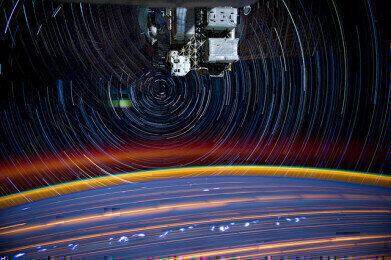News
NASA’s Next Generation Innovations
Nov 26 2015
NASA and next generation innovations go hand in hand. But it’s not just intergalactic advancements that the National Aeronautics and Space Administration is pioneering. Since its inception in 1976 the agency has been responsible for a plethora of cutting edge developments that have shaped life as we know it.
So why is NASA continually coming up with new revelations? By law, the administration is required to disclose its ultra-advanced technologies, materials and equipment for private use. In fact, it encourages the creation of by-products through its Commercial Technology Transfer Network! This leads to the development of commercial inventions that are popularly referred to as ‘NASA spin offs.’ To date, over 1300 of these derivatives have hit the public market.
Want to know more about NASA’s next generation inventions? Read on for a glimpse at some of the most successful products, and what they’ve done for the contemporary world.
- LED – Initially developed for space plant growth experiments, LEDs are now used to fast-track wound healing and treat cancer patients.
- Infrared technology – Used by NASA to detect the creation of stars, infrared technology is now the key element of medical thermometers that track body temperature via the earl canal.
- Diabetes – Rather than rely on insulin shots, technology developed for the Mars Viking lander has allowed diabetes sufferers to streamline the blood sugar management process with a programmable, implanted insulin pump.
- Mammography systems – Technology developed in NASA HQ has vastly improved breast cancer detection techniques.
- Memory foam – Marketed as ‘memory foam,’ this hugely popular material was actually developed as open-cell polyurethane foam used to cushion astronaut seats.
- UV sunglasses lenses – in the 1980s NASA developed advanced lenses designed to protect the eyes of its astronauts from the sun. Today this technology has been snapped up by a commercial sunglasses company known as Eagle Eyes.
- Mobile controlled appliances – Today smartphones can be used to remotely kick-start ovens and other appliances. This ability to start cooking meals on the go is all thanks to NASA computer technology.
- Weatherproof protective coating – Originally developed to protect its Florida based buildings from saltwater erosion, NASA’s weatherproof protective coating material has now been adapted for use on other outdoor structures such as roadways and bridges.
Science is a key element for medical advancements, and it’s not just NASA that’s pioneering new innovations. ‘Speeding up Research into Clotting and Bleeding’ looks at new developments from Maastricht University scientists, focusing on practical detection methods are being developed for thrombosis and bleeding.
Image via Flickr Creative Commons. Credits: NASA's Marshall Space Flight Center
Digital Edition
Lab Asia Dec 2025
December 2025
Chromatography Articles- Cutting-edge sample preparation tools help laboratories to stay ahead of the curveMass Spectrometry & Spectroscopy Articles- Unlocking the complexity of metabolomics: Pushi...
View all digital editions
Events
Jan 21 2026 Tokyo, Japan
Jan 28 2026 Tokyo, Japan
Jan 29 2026 New Delhi, India
Feb 07 2026 Boston, MA, USA
Asia Pharma Expo/Asia Lab Expo
Feb 12 2026 Dhaka, Bangladesh



















